Showing Spotlights 1537 - 1544 of 2780 in category All (newest first):
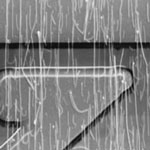 Fabrication conditions for nanoscale field-effect transistors (nano-FETs) have to meet very high requirements in order for these transistors to be used reliably as ultrasensitive and label-free molecular sensors in medical and environmental applications. Current fabrication routes for silicon-nanowire sensor construction involve high-cost, high-complexity - and often low-yield - top-down techniques such as e-beam lithography and focused ion beam. An alternative, and lower-cost, fabrication method is the use of pre-synthesized nanotubes or nanowires that are integrated into microstructures to form nano-FET sensors. Now, researchers have developed an automated vision-based nanomanipulation technique that is capable of precisely controlling the number of nanowires incorporated into each device.
Fabrication conditions for nanoscale field-effect transistors (nano-FETs) have to meet very high requirements in order for these transistors to be used reliably as ultrasensitive and label-free molecular sensors in medical and environmental applications. Current fabrication routes for silicon-nanowire sensor construction involve high-cost, high-complexity - and often low-yield - top-down techniques such as e-beam lithography and focused ion beam. An alternative, and lower-cost, fabrication method is the use of pre-synthesized nanotubes or nanowires that are integrated into microstructures to form nano-FET sensors. Now, researchers have developed an automated vision-based nanomanipulation technique that is capable of precisely controlling the number of nanowires incorporated into each device.
Jan 24th, 2012
 In January 2007, China successfully tested an Anti-satellite (ASAT) missile system by destroying their own defunct LEO satellite, which generated huge amounts of space debris. This ASAT test raised worldwide concerns about the vulnerability of satellites and other space assets and possibility of triggering an arms race in space. In order to meet emerging challenges posed by such ASAT missile systems, military strategists and researchers are developing novel technologies to protect their space assets. In view of the above, Raytheon Company has developed a counter measure system using quantum dots to protect space assets such as satellites from missile attacks. They have developed a decoy consisting of quantum dots of different sizes and shapes that are engineered to emit radiation having a radiation profile similar to that of the asset.
In January 2007, China successfully tested an Anti-satellite (ASAT) missile system by destroying their own defunct LEO satellite, which generated huge amounts of space debris. This ASAT test raised worldwide concerns about the vulnerability of satellites and other space assets and possibility of triggering an arms race in space. In order to meet emerging challenges posed by such ASAT missile systems, military strategists and researchers are developing novel technologies to protect their space assets. In view of the above, Raytheon Company has developed a counter measure system using quantum dots to protect space assets such as satellites from missile attacks. They have developed a decoy consisting of quantum dots of different sizes and shapes that are engineered to emit radiation having a radiation profile similar to that of the asset.
Jan 23rd, 2012
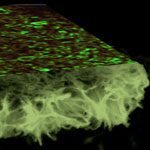 The huge economic impact of the corrosion of metallic structures is a very important issue for all modern societies. Estimates for the cost of corrosion degradation run to about 200 billion euros a year in Europe and over $270 billion a year in the U.S. The annual cost of corrosion consists of both direct costs and indirect costs. The direct costs are related to the costs of design, manufacturing, and construction in order to provide corrosion protection, and the indirect costs are concerned with corrosion-related inspection, maintenance and repairs. Researchers in Germany have now developed a novel and effective encapsulation system for metal protection against a wide range of biological and chemical aggressive agents.
The huge economic impact of the corrosion of metallic structures is a very important issue for all modern societies. Estimates for the cost of corrosion degradation run to about 200 billion euros a year in Europe and over $270 billion a year in the U.S. The annual cost of corrosion consists of both direct costs and indirect costs. The direct costs are related to the costs of design, manufacturing, and construction in order to provide corrosion protection, and the indirect costs are concerned with corrosion-related inspection, maintenance and repairs. Researchers in Germany have now developed a novel and effective encapsulation system for metal protection against a wide range of biological and chemical aggressive agents.
Jan 20th, 2012
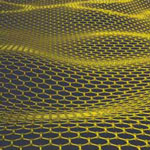 A University of Ulster laboratory has found a simple, low cost and environmentally friendly way to turn common graphite flakes into bulk amounts of either high quality graphene nanosheets or quantum dots. Such structures could lead to new nanoelectronics and energy conversion technologies. The scientists discovered a simple process, which is quicker and environmentally friendlier than currently established techniques for making high quality graphene nanosheets and quantum dots at an industrial scale. The most important attribute of the produced graphene nanosheets and quantum dots compared to those reported in the literature is that they are clean from any solvent contamination and possess a low concentration of oxygen, which is inherited from the starting graphite powder.
A University of Ulster laboratory has found a simple, low cost and environmentally friendly way to turn common graphite flakes into bulk amounts of either high quality graphene nanosheets or quantum dots. Such structures could lead to new nanoelectronics and energy conversion technologies. The scientists discovered a simple process, which is quicker and environmentally friendlier than currently established techniques for making high quality graphene nanosheets and quantum dots at an industrial scale. The most important attribute of the produced graphene nanosheets and quantum dots compared to those reported in the literature is that they are clean from any solvent contamination and possess a low concentration of oxygen, which is inherited from the starting graphite powder.
Jan 18th, 2012
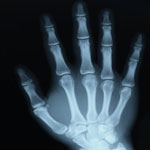 Theoretical and experimental studies over the past few years have demonstrated that carbon nanotubes (CNTs) could exhibit novel and outstanding electromagnetic effects. Researchers have used this to fabricate various types of CNT nanocomposite materials for electromagnetic interference shielding, outperforming conventional shielding. In new work, scientists have now demonstrated the enhanced X-ray shielding of CNTs. Previously, scientists believed that X-ray attenuation - the gradual loss in intensity of X-rays as they travel through a medium - was determined by the atomic number of a material and that its structure didn't matter. What the team found, though, was that that the mass attenuation coefficient of CNTs was by 20-50% higher than that observed for highly oriented pyrolytic graphite and fullerenes.
Theoretical and experimental studies over the past few years have demonstrated that carbon nanotubes (CNTs) could exhibit novel and outstanding electromagnetic effects. Researchers have used this to fabricate various types of CNT nanocomposite materials for electromagnetic interference shielding, outperforming conventional shielding. In new work, scientists have now demonstrated the enhanced X-ray shielding of CNTs. Previously, scientists believed that X-ray attenuation - the gradual loss in intensity of X-rays as they travel through a medium - was determined by the atomic number of a material and that its structure didn't matter. What the team found, though, was that that the mass attenuation coefficient of CNTs was by 20-50% higher than that observed for highly oriented pyrolytic graphite and fullerenes.
Jan 16th, 2012
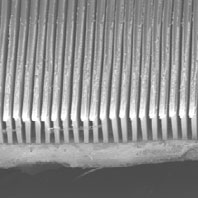 Heat has become one of the most critical issues in computer and semiconductor design. Three factors are playing the most important role in a microscale heat sink cooling system: the thermal conductivity of the material of the cooling fins; the heat exchange area of the cooling fins; and the convection between cooling fins and ambient. Carbon nanotubes satisfy the first two factors very well. They possess very high thermal conductivity and very high surface/volume ratio among other outstanding physical properties such as light, high current carrying capacity, excellent mechanical strength, etc. To reduce high temperatures, today's heat sinks are attached to the back of the chips to pull thermal energy away from the microprocessor and transfer it into the surrounding air. Researchers have now demonstrated the application of interface-enhanced CNTs as on-chip cooling fins in a microchannel heat sink.
Heat has become one of the most critical issues in computer and semiconductor design. Three factors are playing the most important role in a microscale heat sink cooling system: the thermal conductivity of the material of the cooling fins; the heat exchange area of the cooling fins; and the convection between cooling fins and ambient. Carbon nanotubes satisfy the first two factors very well. They possess very high thermal conductivity and very high surface/volume ratio among other outstanding physical properties such as light, high current carrying capacity, excellent mechanical strength, etc. To reduce high temperatures, today's heat sinks are attached to the back of the chips to pull thermal energy away from the microprocessor and transfer it into the surrounding air. Researchers have now demonstrated the application of interface-enhanced CNTs as on-chip cooling fins in a microchannel heat sink.
Jan 13th, 2012
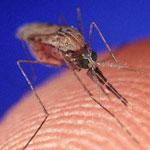 Repellents play an important role in protecting humans from insect bites. An effective and safe repellent is useful in reducing human-vector contact, and thereby helps in the interruption of vector-borne disease transmission - mosquito bites can cause causes diseases like dengue and malaria. There are two types of repellents - synthetic and natural. DEET and DEPA are two of the best studied and most common active ingredient in insect repellents. Researchers in India have developed a cream of microencapsulated DEPA with two natural biodegradable polysaccharides which increases the efficiency of mosquito repellency from 6 hours to 12 hours. No DEPA-based formulation with up to 12 hours of protection time has been reported so far.
Repellents play an important role in protecting humans from insect bites. An effective and safe repellent is useful in reducing human-vector contact, and thereby helps in the interruption of vector-borne disease transmission - mosquito bites can cause causes diseases like dengue and malaria. There are two types of repellents - synthetic and natural. DEET and DEPA are two of the best studied and most common active ingredient in insect repellents. Researchers in India have developed a cream of microencapsulated DEPA with two natural biodegradable polysaccharides which increases the efficiency of mosquito repellency from 6 hours to 12 hours. No DEPA-based formulation with up to 12 hours of protection time has been reported so far.
Jan 12th, 2012
 This article summarizes the progress, products outlook, advantages, and limitations of nanocomposites in the automotive industry. Polymer nanocomposites represent a new class of multiphase materials containing dispersion of nano-sized filler materials such as nanoparticles, nanoclays, nanotubes, nanofibers etc. within the polymer matrices. Owing to their nanoscale size features and very high surface-to-volume ratios, they possess unique combination of multifunctional properties not shared by their more conventional composite counterparts reinforced with micro-sized fillers. These multifunctional nanocomposites not only exhibit excellent mechanical properties, but also display outstanding combination of optical, electrical, thermal, magnetic and other physico-chemical properties.
This article summarizes the progress, products outlook, advantages, and limitations of nanocomposites in the automotive industry. Polymer nanocomposites represent a new class of multiphase materials containing dispersion of nano-sized filler materials such as nanoparticles, nanoclays, nanotubes, nanofibers etc. within the polymer matrices. Owing to their nanoscale size features and very high surface-to-volume ratios, they possess unique combination of multifunctional properties not shared by their more conventional composite counterparts reinforced with micro-sized fillers. These multifunctional nanocomposites not only exhibit excellent mechanical properties, but also display outstanding combination of optical, electrical, thermal, magnetic and other physico-chemical properties.
Jan 11th, 2012
 Fabrication conditions for nanoscale field-effect transistors (nano-FETs) have to meet very high requirements in order for these transistors to be used reliably as ultrasensitive and label-free molecular sensors in medical and environmental applications. Current fabrication routes for silicon-nanowire sensor construction involve high-cost, high-complexity - and often low-yield - top-down techniques such as e-beam lithography and focused ion beam. An alternative, and lower-cost, fabrication method is the use of pre-synthesized nanotubes or nanowires that are integrated into microstructures to form nano-FET sensors. Now, researchers have developed an automated vision-based nanomanipulation technique that is capable of precisely controlling the number of nanowires incorporated into each device.
Fabrication conditions for nanoscale field-effect transistors (nano-FETs) have to meet very high requirements in order for these transistors to be used reliably as ultrasensitive and label-free molecular sensors in medical and environmental applications. Current fabrication routes for silicon-nanowire sensor construction involve high-cost, high-complexity - and often low-yield - top-down techniques such as e-beam lithography and focused ion beam. An alternative, and lower-cost, fabrication method is the use of pre-synthesized nanotubes or nanowires that are integrated into microstructures to form nano-FET sensors. Now, researchers have developed an automated vision-based nanomanipulation technique that is capable of precisely controlling the number of nanowires incorporated into each device. 
 Subscribe to our Nanotechnology Spotlight feed
Subscribe to our Nanotechnology Spotlight feed





